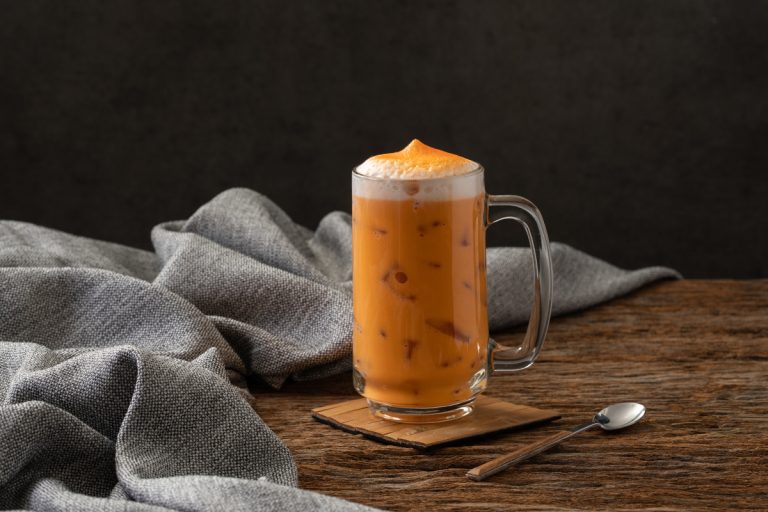Thai tea is often orange due to the addition of food coloring, but other factors, such as the specific type of tea used (traditionally Ceylon Tea), as well as other ingredients, such as spices, can also contribute to its color.
Here’s a more detailed breakdown:
Table of Contents
Food Coloring
- Artificial Coloring: Many commercial Thai tea mixes contain yellow food coloring, which, when combined with the tea, gives it its characteristic orange hue.
- Traditional Practices: The practice of adding food coloring to Thai tea dates back many decades, and it has become a signature characteristic of the drink.
Tea Leaves
- Ceylon Tea: Thai tea is traditionally made with Ceylon tea, a type of black tea that has a strong and robust flavor. Ceylon tea can have different hues of color, ranging from amber to a darker reddish-brown, depending upon how it’s processed.
Other Factors
- Spices and Flavorings: Thai tea can also include a variety of spices such as star anise, crushed tamarind seed, and cardamom, which can contribute to its overall color.
- Condensed Milk: The addition of condensed milk or coconut milk, which is common when serving Thai tea, can also change the color and consistency of the tea.

